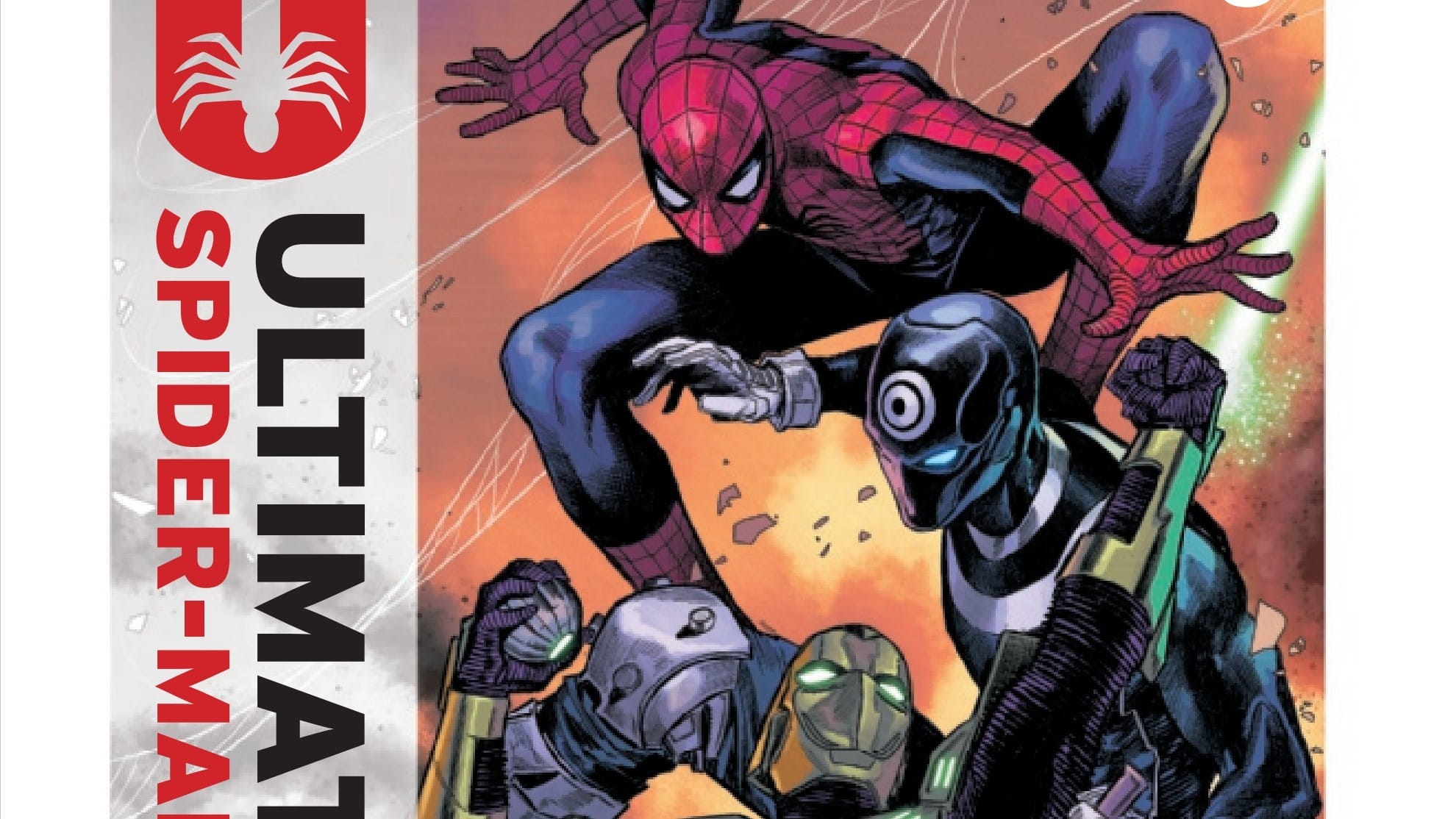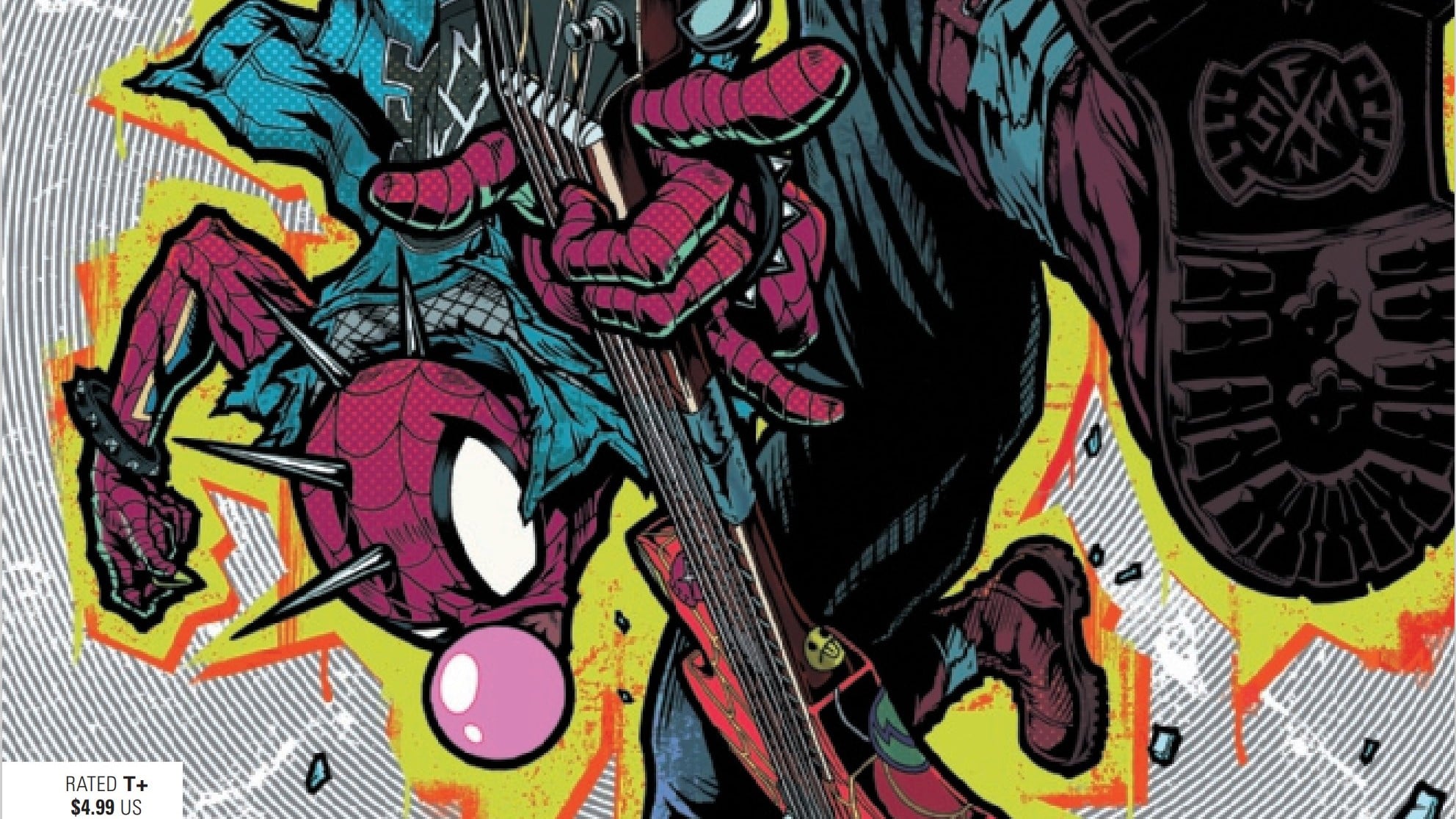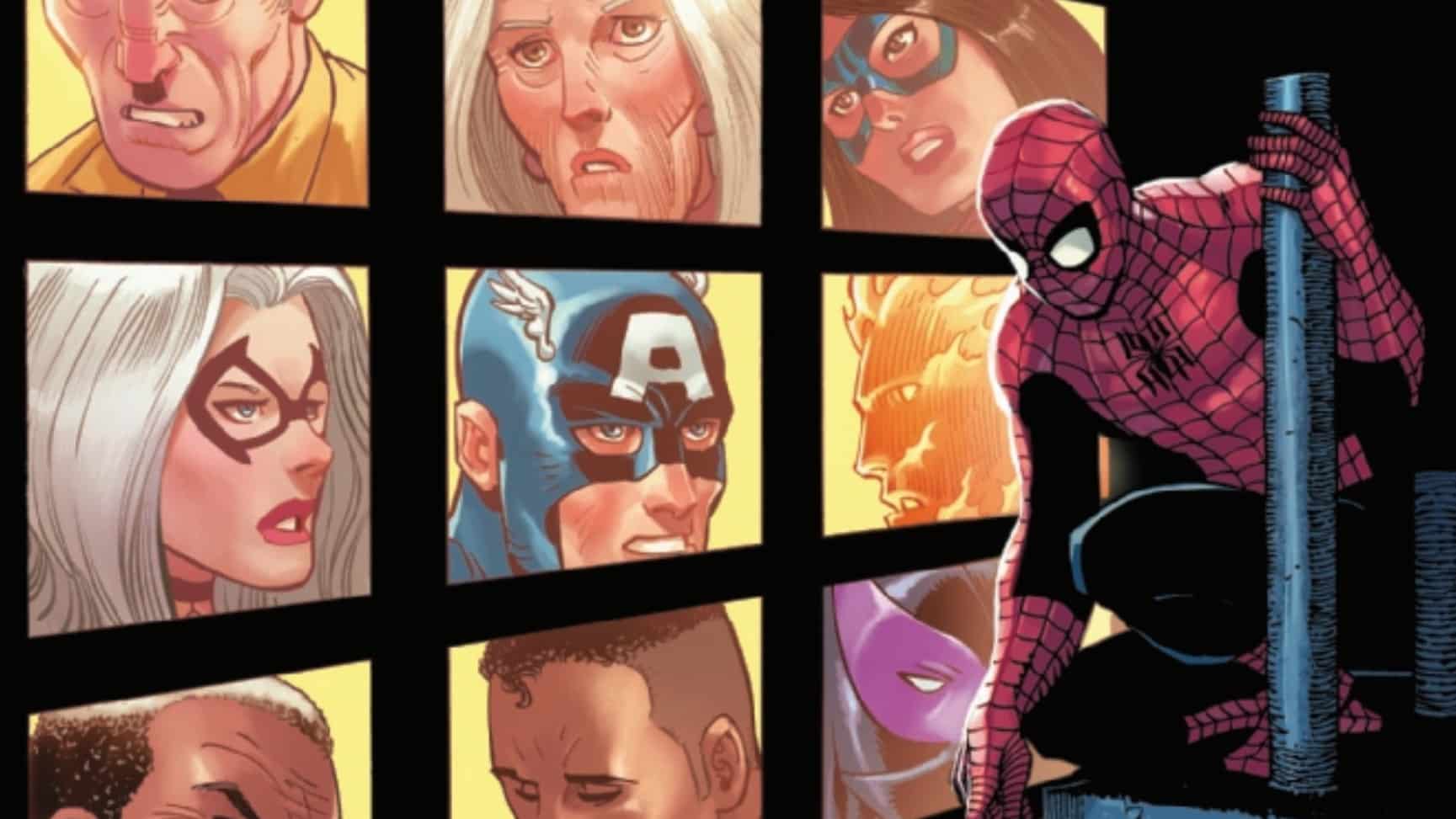Miles has been at the center of a universe, the center of a universe-bridging event, at the center of a universe-DESTROYING event, at the center of the Avengers and at the center of the Campions…He’s been in animated TV shows and starred and in maybe the best Spider-hero and superhero movie ever, INTO THE SPIDER-VERSE. Miles has also inspired generations of fans by proving once again that anyone can wear the mask to be Spider-Man. That impact cannot be understated. And that’s just in his FIRST TEN YEARS!
Marvel editor Nick Lowe, commemorating ten years of Miles Morales
Even as I shudder at the “anyone can wear a mask” comment, a backhanded way of acknowledging Miles’ Blackness, I agree with Lowe’s sentiment. All of it is true. And because all of this is true, Miles Morales: Spider-Man #30 is all the more frustrating.
…yeah, it be like that sometimes.
Miles Morales, this issue
Nothing happens here. Miles stops a villain who stole mandroid armor; he rescues a dog for a pair of twin girls; he meets up with his date in his new uniform; Taskmaster queues up a bow on the last page, signaling the beginning of another story arc.
That’s it.
There is no depth; there are no stakes. We did not learn anything new about Miles; we did not take a peek into his psyche or the emotional toll of everything he’s been through. We didn’t learn about his friends,or his clone brother, or his school, or any lingering feelings about his lost uncle. On the ten year anniversary of Miles’ introduction, for a character that, as Lowe noted, is incredibly pivotal and popular, we received a banal 16 pages of copy. Miles doesn’t need a benediction from an editor; he needs better stories.
I know I say this every week. I know I sound like a broken record. But all if it is true. All those “generations of fans” deserve something more.
And this is not more.
Along with the (short) main story, two additional stories complete this issue (which may be why the main story was so short, but still. Do better.) The first, written by Phil Lord, Christopher Miller, Kemp Powers, and Jeff Loveness (aka the Spiderverse team – that’s a lot of names for 6 pages), reads less as a love letter to Miles and more as a love letter to New York, as Miles awkwardly deals with fame in the Information Age. Again, we don’t really learn anything about Miles’ character here, save that he (or at least the writing team) appreciates the idiosyncrasies of the city. It’s fine, if ultimately forgettable.
The second story, penned by Rick and Morty & upcoming Amazing Spider-Man writer Cody Ziglar, sees a (relatively) elder MIles stopping some kids from committing a low-level crime 10 years in the future. The stakes, again, are low, and that’s fine; the dialogue, however, isn’t fine. It’s bad. Real bad. Not bad meaning good either.
This older Spider-Man’s use of AAVE feels forced and, considering the story takes place 10 years from now, dated. Maybe this is deep-cut satire, poking fun at how older writers sometimes swing and miss at writing for young Black and Brown kids; maybe Spider-Man is intentionally exaggerating his slang as a means of gaslighting the n’er criminals. In any case, it doesn’t land, and it distracts from the story, a story that’s been told what feels like a million times before (seriously: this is literally the premise of Rocket and Icon #1.)
So I didn’t like it this story. I really didn’t like any of the stories. Yet I still encourage you to buy this comic.
Why? Well…
The art in all three stories is impressively good. Great actually – every single panel. I’ve grown to love how Carnero animates action; the love and care she puts into the nuances of Miles (and of other Black characters) faces is spot on. Miles may not have the dialogue or stories he deserves, but he absolutely has the artist (and colorist) of a super star. Seeing Sara Pichelli return (in the first short story) to a character she helped create is gratifying; it’s clear her love for Miles comes through in her pen. Anthony Piper’s cartoonish take on Miles in the final story is excellent. This Saturday morning serial look feels appropriate for the story: fun, flowing, free.
But beyond the art is another reason, a reason Black people are all too familiar with: sometimes supporting art is obligatory, regardless of the art’s quality.
When Issa said she was rooting for everybody Black, it touched a nerve with a lot of Black folk. We are often marginalized, cut out of stories – including stories that should center us. (See: Lost in Way of X.) It’s not just that we don’t win (although it’s that too); it’s that we don’t always have the opportunity to even get considered. I come from a generation that didn’t see a lot of people who looked like me doing anything but serving as docile support for a white guy’s fantasy. So this work, while frustrating, while underwhelming, while highly imperfect…is still important. Still vital. Still needed.
And since capitalism rules the day and dollars dictate decisions, if we want to see more – if I hope to see a better version – then we are obligated to support. So yes. This was underwhelming. This was frustrating. But it is necessary. Buy it so in another 10 years, someone will hopefully have the opportunity to write the stories Miles – and we – deserve.
A proud New Orleanian living in the District of Columbia, Jude Jones is a professional thinker, amateur photographer, burgeoning runner and lover of Black culture, love and life. Magneto and Cyclops (and Killmonger) were right.
Find more of Jude’s writing here.






